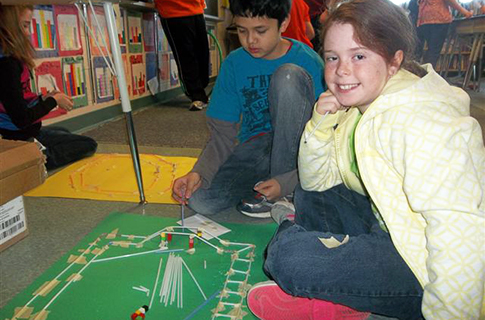Type and Purpose of Learning
While being mock engineers and construction workers, students had the opportunity to feel what it was like to organize, create, and solve problems in the real world. Through construction learning, students thought and designed, pre-planned and experimented with objects and materials, using logic and spatial reasoning to build a train track. In doing so, the math concepts of linear measurement, money matters, connection to time and distance, volume, and even adding with decimals became more meaningful and realistic to the students.





